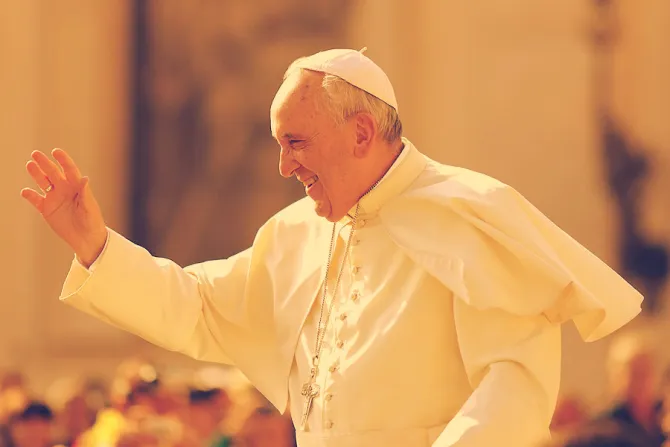Vatican City, Apr 12, 2016 / 05:46 am
Social media can be a place for evangelization.
The proof? The giant audience for Pope Francis' new Instagram profile. More than 1 million people followed his "Franciscus" account in the first 12 hours after its March 19 launch. As of April 11, he has over 2.2 million followers on the photo-centered network.
Reflecting on this success, and on what it means for the Church in the social media age, Monsignor Dario Edoardo Vigano, prefect of the Secretariat for Communication, offered his thoughts.
"The astonishing success of Pope Francis' Instagram profile was a real surprise to all of us, and also to Instagram itself, which made it a case study," Msgr. Vigano told CNA.
He credited the success to "the fact that people want to see the Pope and want to have the Pope on their side."
"This is one of the characteristics of the entire pontificate, which social media helps to emphasize," he said.
Papal involvement in social media began with Pope Benedict XVI.
"Benedict XVI said that life on the internet is an apostolic activity," Msgr. Vigano said. "We must live in these spaces with responsibility, as the internet spaces are neither good nor bad… they are simply different than the usual spaces for traditional communication."
He criticized the claim that social media is not important, saying that people who make this argument are unusually older and have "lived in an era without social media."
"But we should overcome this thought," he emphasized.
The monsignor noted areas of social media where evangelization can take place.
"There are often groups of young people who attend catechesis and then continue their dialogue on the social networks. And there are people who find in social networks the motivation to have a personal meeting in catechesis."
He stressed that social networks offer the opportunity to "enlarge our communities, expanding the possibility to reach out to people."
Msgr. Vigano noted that social media audiences can skew young. "Especially Instagram. Ninety percent of Instagram users are under 30," he observed.
This provides a very useful channel for the message of the Pope, the Gospel and the Church, he continued.
For Instagram, the message is in an image that "speaks emotionally." For Twitter, which provides a 140-character limit on text messages, the message is "very short."
"But this does not make the message less valuable," Msgr. Vigano stressed.
He compared the brevity of a Tweet to the recommendations of the Catholic tradition that praise "even very short moments of prayer."
Saying a "Glory Be" prayer takes the same time as typing 140 characters, he said.
The monsignor compared the rapidity of social media to "a continual firing of spiritual arrows into the heart of God."
"I believe that social media really can help to welcome the grace of God."
Beyond Instagram, the Pope's Twitter profile "Pontifex" is an important success. The tweets are written by the Secretariat for Communication and then personally approved by the Pope.
Msgr. Vigano said that a series of tweets are drafted for the Pope from paraphrased excerpts of papal documents or homilies or from quotes from the Gospel.
"The Pope personally approves each of the tweets by signing them with an 'F.' When there is an 'F,' we know that we can tweet that."



